Every revenue leader aspires to have an entire team of effective sellers. After all, effective sellers are well-equipped to engage with buyers, deliver value throughout the sales cycle, and close more deals.
But in many cases, sellers aren’t as effective as they could be. Often, it’s because they’re spending so little time interacting with buyers and closing deals. Salesforce research found that sales reps spend a mere 28% of their week selling.
Sales reps spend only
The rest of their time is spent completing time-consuming administrative work and toggling between the tools they’re expected to use to close deals.
Even when buyers are meeting with prospects, they aren’t always effective. Sometimes, they’re not spending time with the right prospects. Over 70% of sales reps believe 50% of the prospects they speak with aren’t a good fit for what they’re selling. Sales effectiveness can also fall short when sellers haven’t yet perfected the skills they need to be successful.
To grow revenue, leaders must make it a priority to boost sales effectiveness. But what exactly does that mean?
Read on to explore sales effectiveness, why it matters, and how you can measure it at your organization. We’ll also share some best practices you can use to increase your organization’s sales effectiveness (and revenue growth).
Sales effectiveness definition
Most sales leaders agree that sales effectiveness is important. But without a clear definition, it’s impossible to measure it. If you can’t measure it, you can’t improve it.
With that in mind, let’s start by answering the question, “What is sales effectiveness?”
At the most basic level, it refers to how well your sellers turn prospects into buyers. Throughout the typical purchase journey, a seller has multiple interactions with a potential buyer. Effectiveness gauges the seller’s ability to conquer each of these interactions. Of course, their ability to conquer these touchpoints depends on many factors, including the quality of training and coaching – and how (or whether) they put this training and coaching into practice to improve.
Sales effectiveness vs. sales efficiency
Oftentimes, “sales effectiveness” and “sales efficiency” are used interchangeably. While they’re certainly related, they’re not the same thing.
Sales efficiency is about what your team is doing. For example, you might measure how much time your sales team is spending on training.
On the other hand, sales efficiency is how your team is performing. Sales effectiveness considers how much your sales reps are actually getting out of their training – and whether they’re putting that learning into practice in the field.
It’s possible to have a team that’s efficient – but not effective. In other words, your sales reps may complete tasks quickly. However, that doesn’t mean they’re completing the right tasks to move deals forward.
How to measure sales effectiveness
There’s an old adage that you can’t improve what you don’t measure. This definitely rings true for sales effectiveness. If you’re not continuously measuring it, it’s impossible to identify areas for improvement.
But many aren’t sure how to measure sales effectiveness.
5 essential sales effectiveness metrics
There’s no single metric for gauging sales effectiveness. Instead, sales organizations must track myriad metrics to get an accurate picture of it.
The exact measurements vary from organization to organization. However, there are five key metrics for any organization.
Quota attainment measures the percentage of your reps that are achieving quota. This metric is one of the most obvious ways to determine sales effectiveness.
This is the percentage of prospects who ultimately end up purchasing your product or service.
CAC is a measure of how much it costs the company to convert a prospect to a customer. This includes both the cost of sales and marketing, divided by the number of new customers acquired.
This is how quickly prospects progress through the sales cycle. Obviously, the shorter the sales cycle length, the faster money comes in. This is a metric you’ll want to compare to industry benchmarks. If your sales cycle length is significantly longer than industry average, there’s obviously something that needs to improve.
The average amount of money a business makes from closing a deal. A high average deal size can be an indicator that your sellers are effective at building relationships with customers.
Using KPIs to assess and improve sales performance
Sales effectiveness measures how your sales team is performing. As such, it’s important to focus on accessing your reps’ performance – and then taking data-based action to improve it.
Let’s take a look at some of the tools and techniques winning sales orgs are using to access and improve sales rep performance.
Sales dashboards and reporting
Improving your reps’ performance requires access to the right data. You can’t help them improve if you don’t know where they’re excelling and where they’re falling flat.
Most organizations have no shortage of data. But often, it lives in myriad locations. It’s important to ensure you have access to sales dashboards and reporting tools that make it easy to not only pull the right data – but also make sense of it so you can take action on it.
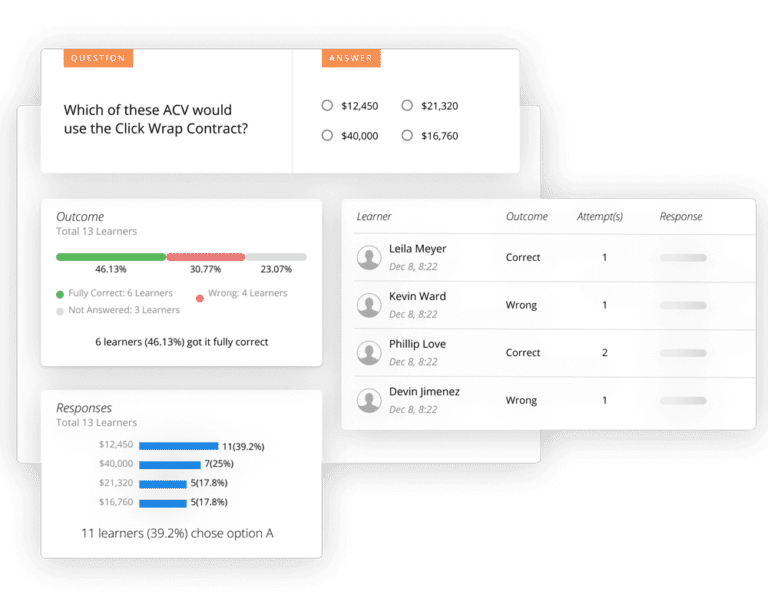
Sales call recording analysis
Sure, a sales rep may complete all training and enablement activities. But that doesn’t guarantee success. It’s important to understand whether the rep is actually using their newly acquired selling skills while in the field.
Conversation intelligence software records sales calls – and then analyzes those calls. This gives managers insight into what’s really happening in the field. That way, managers can provide training and coaching to improve the effectiveness of the rep – both on that deal and long term.
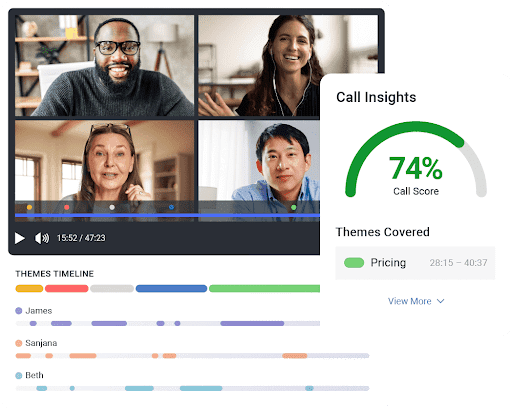
Quarterly rep feedback cycles
Ongoing feedback is essential to improving rep performance and boosting sales effectiveness. Managers should perform quarterly reviews for each rep. These reviews are a great opportunity to examine sales performance quarter-over-quarter. In addition, it’s an opportunity to discuss opportunities for improvement.
But remember: feedback should be ongoing. Don’t wait until these quarterly meetings to provide feedback.
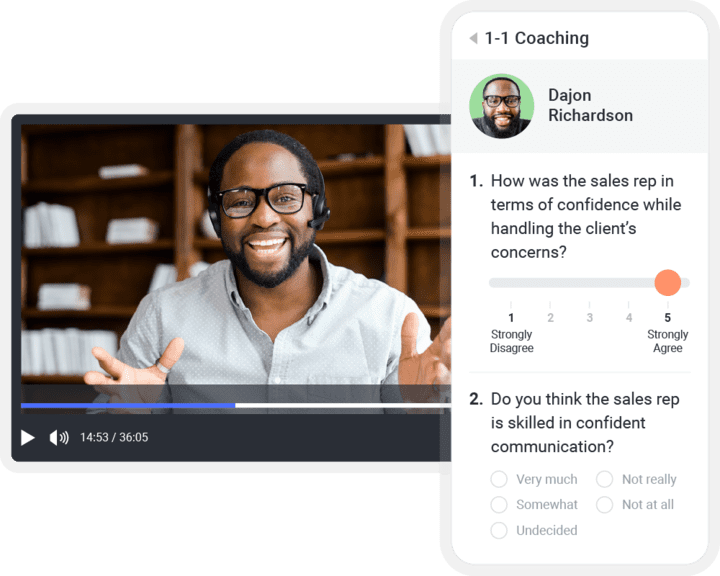
Newer reps vs. experienced rep analysis
It’s important to measure overall sales effectiveness. But be sure to measure sales effectiveness on a variety of levels too.
One example is newer reps vs. experienced reps. Experienced reps likely have different strengths and weaknesses than newer ones. Measuring sales effectiveness based on tenure can shed light on opportunities for improvement specific to each group.
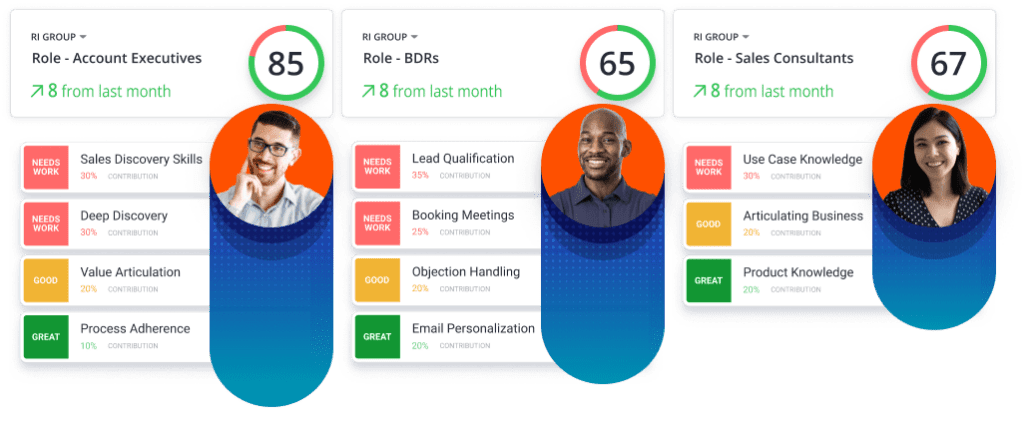
Sales enablement and sales training technology
Each rep has different strengths and weaknesses. Ongoing measurement helps you identify where sellers may need additional support to improve sales effectiveness.
Sales training, sales enablement, and sales coaching are all key to boosting seller performance. The sales effectiveness tools can help you identify the needs of each rep – and then deliver personalized sales training, sales enablement, and sales coaching to increase sales effectiveness.
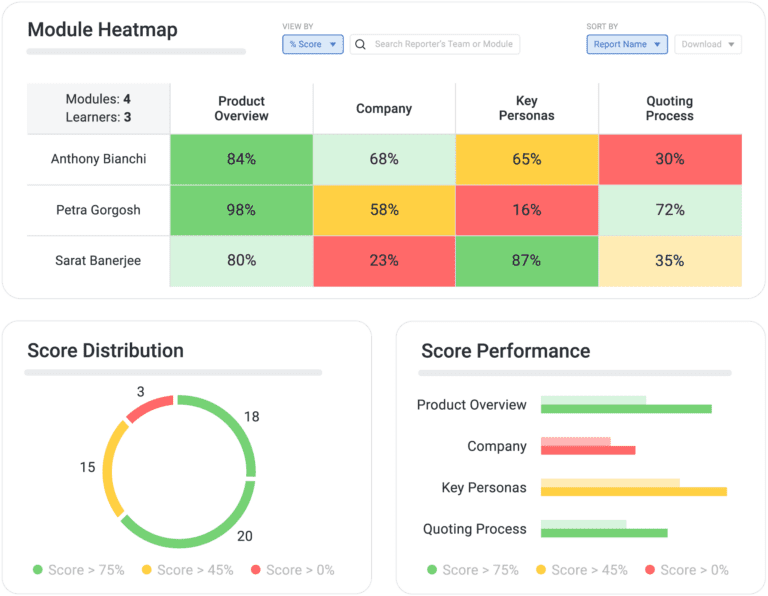
Proven techniques for improving your sales effectiveness strategy
Improving sales effectiveness is a top goal of most sales organizations. But what can you do to boost this key metric?
Here are some foundational techniques to improve your sales effectiveness strategy.
Identify target markets and ideal customer profiles
Sometimes, a deal doesn’t move forward simply because the prospect isn’t the right fit for your products or services. It’s important to develop ideal customer profiles (ICPs), outlining the qualities of companies that are a good fit for your products and services. Be sure your sellers know these ICPs inside and out. Sellers should be spending the bulk of their time with prospects that align with these ICPs.
Provide personalized training and coaching
Sales training and coaching are key to building each seller’s competencies to succeed. But oftentimes, organizations deliver training and coaching that’s one-size-fits-all.
First, organizations must define the skills and competencies that are required to succeed in the field. Then, each rep should be measured against that ideal rep profile (IRP). Finally, personalized training and coaching can be delivered to strengthen those weaker skills – and boost sales effectiveness.
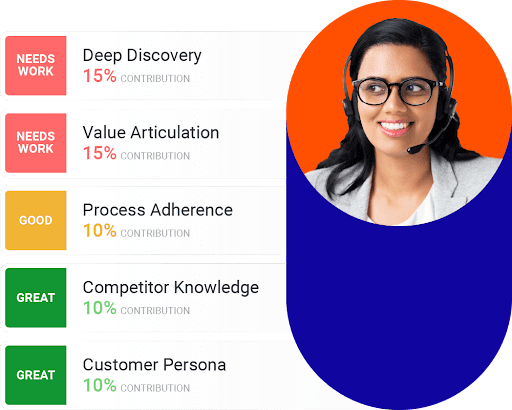
Improve sales and marketing collaboration
Typically, marketing teams create plenty of material for reps to use throughout the sales cycle. But often, these materials are created without input from the sales team. Marketing and sales teams must work together to identify what reps need throughout the sales cycle – and what actually helps move deals closer to the finish line. That way, marketing teams can focus on the content that’s proven to work. Sales and sales enablement teams can help ensure sellers know how and when to use these marketing-created materials.
Deliver continuous feedback
Feedback shouldn’t just come during a quarterly review. Instead, managers must make it a priority to deliver feedback on an ongoing basis. That way, their reps understand what they need to work on to improve sales outcomes.
Improving sales effectiveness with Mindtickle
Your sales reps might be efficient at “checking off the boxes.” But that doesn’t mean they are effective in the field. Increasing sales effectiveness must be a top priority for any organization looking to grow revenue.
It’s key to identify the competencies needed for success at your organization. Then, you must measure your reps against this gold standard to understand where additional support is needed.
With Mindtickle, you can shed light on where reps are excelling – and where they’re falling flat. Then, you can leverage the platform to deliver personalized, data-based sales training, coaching, and enablement to boost skills – and increase sales effectiveness.
Hypercharge sales effectiveness
See for yourself how Mindtickle can help you increase sales effectiveness at your organization.
Get Your DemoThis post was originally published in September 2023 and was updated in February 2024.



 By Helen Waite
By Helen Waite

 By Rahul Mathew
By Rahul Mathew